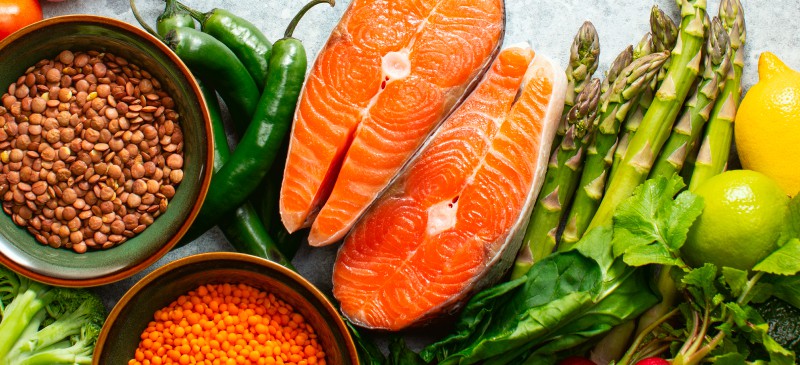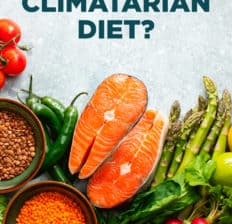This Dr. Axe content is medically reviewed or fact checked to ensure factually accurate information.
With strict editorial sourcing guidelines, we only link to academic research institutions, reputable media sites and, when research is available, medically peer-reviewed studies. Note that the numbers in parentheses (1, 2, etc.) are clickable links to these studies.
The information in our articles is NOT intended to replace a one-on-one relationship with a qualified health care professional and is not intended as medical advice.
This article is based on scientific evidence, written by experts and fact checked by our trained editorial staff. Note that the numbers in parentheses (1, 2, etc.) are clickable links to medically peer-reviewed studies.
Our team includes licensed nutritionists and dietitians, certified health education specialists, as well as certified strength and conditioning specialists, personal trainers and corrective exercise specialists. Our team aims to be not only thorough with its research, but also objective and unbiased.
The information in our articles is NOT intended to replace a one-on-one relationship with a qualified health care professional and is not intended as medical advice.
What Is the Climatarian Diet? Benefits, Meal Plan & More
May 20, 2022

Whether you’re aware of it or not, your diet has an impact on the environment. No matter what type of eating plan you choose to follow — whether the Paleo diet, plant-based diet or one’s that health-focused, such as the Mediterranean diet — chances are that you’d like your food choices to have positive effects on the planet and climate change. Enter the climatarian diet.
Some who base their food and lifestyle choices on the carbon footprint that they have refer to themselves as “climatarians.”
How do you become a climatarian? One way is by eating sustainable foods and avoiding others, specifically those that have a high carbon footprint and contribute to greenhouse gas emissions.
You might assume that a climatarian diet is a vegan diet, however this isn’t necessarily the case. As covered in more detail below, other important aspects of this approach include eating locally sourced fruits and vegetables and avoiding foods that require far transport or that deplete natural resources.
What Is a Climatarian Diet?
A climatarian diet is one that’s both good for the planet and also good for your health. It focuses on the environmental impacts that different foods have, emphasizing those that are more sustainably produced, while limiting others that deplete resources and damage the environment.
According to the New York Times, the name of this diet was first coined around 2015. It’s since gained a larger public following as well as the attention of major food chains in the U.S. and elsewhere, including Chipotle, Subway, Starbucks, Just Salad and Shake Shack.
Climatarians have many things in common with reducetarians, who are committed to eating less red meat and dairy and fewer eggs with the goal of positively impacting the climate crisis.
Related: What Is the Nordic Diet? Benefits, Meal Plan & What You Can Eat
Carbon Footprint of Food
According to many organizations focused on climate change, including the Environmental Protection Agency (EPA), our food choices are one of the main contributors to greenhouse gas emissions, deforestation, depletion of natural resources and other environmental concerns.
For example, findings from recent studies have demonstrated that about one-third (34%) of all man-made greenhouse gas emissions are caused by agriculture and food systems, including growing crops and raising livestock, food distribution, processing methods, and transportation.
Research published in 2021 in the journal Nature Food suggests that an estimated 71% of food system gas emissions come from the use of land for agriculture (such as methane released from livestock), while 32% come from land use changes, such as deforestation and soil degradation. Transportation accounts for about 6% of food’s total climate footprint.
As one professor of civil and environmental engineering explained: “If [a climatarian diet] were reproduced across the population for just one year, it would result in a reduction of greenhouse gas emissions by 106 million metric tons — or the equivalent of one-third of the Paris Climate Agreement targets.”
Climatarian Benefits
What is a climatarian diet beneficial for? Below are some of the positive impacts this diet can have, both for you as an individual and also for the planet as a whole:
1. Encourages Eating Fewer Animal Products
Climatarians aren’t all vegans or vegetarians, but most try to limit the amount of meat they eat, especially beef and lamb, which have a higher carbon footprint compared to chicken, pork and some types of seafood.
The goal doesn’t necessarily have to be to avoid meat or animal proteins all together, but rather to replace some meat with more sustainable options, including plant proteins like beans, legumes and seeds.
2. Helps Cut Down on Greenhouse Gas Emissions
If we all changed our diets, it could lead to a significant decrease in CO2 emissions.
Raising livestock and factory farm red meat production are some of the least climate-friendly food systems, since livestock produce gas emissions that can damage the atmosphere. Plants produce significantly less greenhouse gas emissions and even give back to the planet — plus plants pose less risk of deforestation and destruction of land.
3. Saves Resources
By eating more unprocessed plant foods and foods that are produced locally, a climatarian diet can help reduce the amount of energy, water, fuel and other resources that are used when producing, processing and shipping foods.
Here’s an example: It requires a lot more water to produce a pound of animal protein than it does to produce a pound of plant protein, so by subbing out some meat in your diet for plants, you can save valuable water plus land used to raise livestock.
By shopping for local and seasonal foods you also reduce the need for fuel used to transport foods from far away.
4. Can Improve Your Health
Not only is a climatarian diet beneficial for the Earth, but it’s also a healthy option for you assuming you stick to whole, unprocessed foods.
Studies show that people who consume plenty of plants — especially veggies, fruits, whole grains, beans, nuts and seeds — benefit from a decreased risk of inflammatory, chronic health problems, such as cancer, heart disease, type 2 diabetes and stroke.
The more antioxidants, fiber, vitamins and minerals included in a climatarian diet, the better. The key is to avoid processed vegan foods and packaged items and to choose foods in their natural state. This approach can cut your risk for colorectal, breast, prostate, pancreatic and stomach cancers.
How to Do It (Foods to Eat)
Seasonal, locally produced, organically grown plant foods tend to be best for the environment and planet, although it really depends on how exactly they’re grown.
On the other hand, unsustainable foods that take from the planet and don’t give back include factory farm-raised beef and produce that is grown in mono-crop fields, sprayed with pesticides and then shipped across the globe.
Among the most sustainably produced foods with the lowest greenhouse gas footprints — meaning those included in a climatarian diet— are:
- Locally grown, organic vegetables and fruits, especially leafy greens, apples, oranges, bananas, carrots, celery, onions, potatoes/tubers, mushrooms, okra, broccoli and squashes, which require little resources to grow. Choosing organic produce whenever possible results in fewer pesticides added to the soil.
- Sprouts and grasses, such as alfalfa and sprouted beans.
- Bean and legumes, such as lentils, black beans, mung beans, pinto beans, kidney beans, fava beans and organic tofu.
- Whole grains, such as rice, teff, millet, rye, barley, spelt, fonio and sorghum.
- Some nuts and most seeds, such as walnuts, flax, chia, hemp, sesame, hazelnuts, sunflower seeds, watermelon seeds and pumpkin seeds.
- Wild-caught anchovies, sardines, herring, tuna, pollock, cod and haddock. Wild salmon and tuna fall somewhere in the middle, since they still have a climate impact but not as much as other seafood.
- Mollusks like mussels, clams, oysters and scallops.
- Organic milk from grass-fed cows is OK in moderation. This type of dairy is more sustainable than chicken, eggs or pork per pound. Yogurt, cottage cheese and cream cheese have a similar climate impact as milk.
- Free-range eggs.
- Certain types of algae and sea vegetables.
- Bison meat and in small amounts free-range chicken or grass-fed meats.
In addition to emphasizing the climate-friendly foods above, other climatarian diet lifestyle habits include:
- Eating a variety of foods, including different protein sources (a mix of plants and animal proteins). Studies show that 75% of the food we consume comes from just 12 plant sources and five animal sources, and this lack of variety is hard on the ecosystem.
- Growing your own food if possible, such as by planting a garden in your yard or patio.
- Shopping at local farmers markets, which offer local, seasonal food that doesn’t need to be shipped far.
- Composting waste, which helps build healthy soil and assists in you growing your own food — plus it decreases land pollution. You can also search in your local area for a compost collection company.
- Using less plastic, such as food containers and water bottles, and instead utilizing reusable materials like glass bottles.
- Decreasing food waste by preserving fruits and some veggies by canning them or freezing them.
Foods to Avoid
- Limit beef and lamb, which have the biggest climate footprint. Chicken and pork have less of a negative impact but are still best in moderation. If you do eat beef, opt for beef raised in the United States over beef raised in Brazil or Argentina.
- Limit dairy produced from factory-farm cows, including milk and cheeses, such as mozzarella and cheddar.
- Limit certain types of seafood that are less sustainable, especially farm-raised crustaceans, such as shrimp and lobster and farmed tilapia.
- Some nuts require more resources than others. Almonds and pistachios, which are water-sensitive and hard to grow in places experiencing droughts, are the least climate-friendly.
- Processed foods made with palm oil and sugar, which require lots of resources to create.
Climatarian Sample Menu
It might seem overwhelming to overhaul your diet in favor of plants and organic and grass-fed foods. You can take it one step at a time, slowly replacing unsustainable foods like factory-farm red meat with better choices, such as flax or hemp seeds, chickpeas, lentils, and plenty of veggies.
Here’s an example of what a day of eating a climatarian diet could look like:
Breakfast:
- Rolled oats with seasonal fruit, chia and pumpkin seeds, along with organic, grass-fed yogurt.
- Free-range egg cooked with leafy greens and other seasonal veggies, plus whole grain bread.
Lunch:
- Salad made with seasonal veggies, chickpeas or other beans, a bit of organic cheese, seeds and raisins, and dressing made with olive oil and vinegar.
- Veggie bean burger topped with tomato, greens and your favorite dressing, either served with an organic whole grain bun or on top of salad or grains, such as quinoa.
Dinner:
- Wild-caught salmon served with cooked local veggies and brown rice.
- Whole grain pasta with an anchovy/sardine sauce, olives and veggies.
- Pasture-raised chicken fajitas with veggies and black beans on organic corn tortillas.
Conclusion
- What is a climatarian diet? It’s a healthy, climate-friendly diet that emphasizes foods that are sustainable.
- This diet includes mostly plant-based foods that have a lower environmental impact than foods like beef, diary and some seafood. However, it’s not strictly vegan or vegetarian.
- It’s all about eating low carbon footprint foods like beans, veggies, seasonal fruits, nuts, seeds, and in small amounts eggs, chicken and some seafood.
- Not only does this diet help save resources and produce less greenhouse gas emissions, but it’s good for your health too, slashing your risk for issues like obesity, heart disease, diabetes and some cancers.




